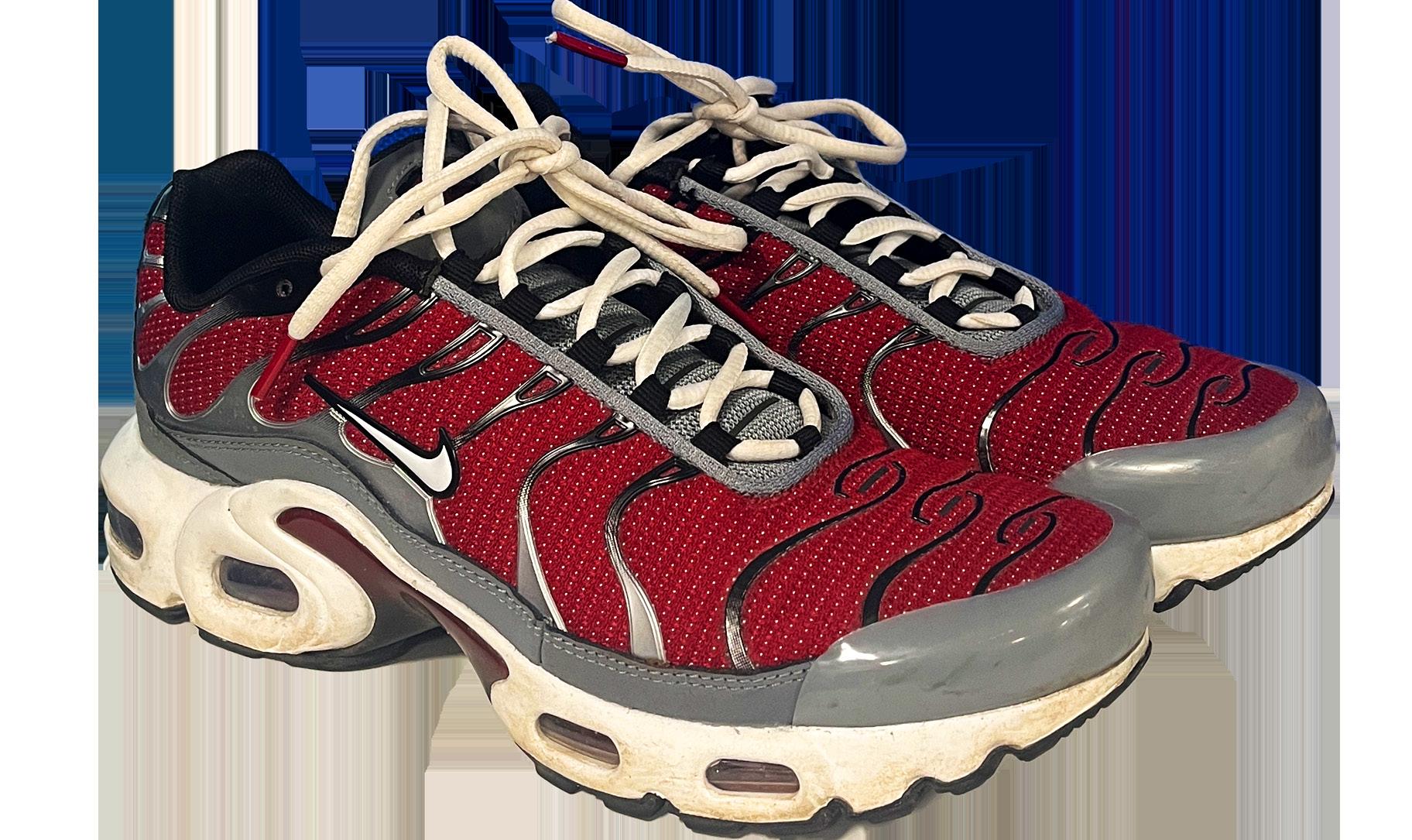GORP
A bloody good guide to camping on your period

War on water
Meet the people fighting for cleaner rivers
Let’s be Frank (Ocean)

DIY celebrity Gorp looks for less

A bloody good guide to camping on your period

War on water
Meet the people fighting for cleaner rivers
Let’s be Frank (Ocean)

DIY celebrity Gorp looks for less
£4.50
Spring issue 002
Established 2023
Spring is about new beginnings and a great time to try something different. Our Go Wild issue will guide you through the wilderness and help you take up all things wild. If you’d like expert, foolproof advice for beginners, check out our guide on what to wear on a spring hike – and how to make the perfect coffee while you’re at it (p.9). Rather hear what it’s like to try something new from a rookie? Head to pages 12 and 13, where one novice discovers the unexpected joy of birdwatching (with a little help from our old friend technology), while another tries wild swimming for the first time. Plus, amid the ongoing fight for the right to roam in England, GORP gives the lowdown on the best places to wild camp across Europe (p.14).
One of the joys of being editors on this issue is that it coincides with International Women’s Day (8 March), so we included features we hope will inspire young women to embrace the outdoors. The first is a chat with Nadia Weigh of Adventure Queens, a women’s adventure community, about the group’s work to make the outdoors more inclusive (p.15). In the second feature, two female outdoor instructors – Harriet MacMillan and Dawn Adam – offer a definitive guide to camping on your period (p.18).

GORP also chatted to wildlife photographer Daniel Alford about his humble beginnings as a student with a hobby to becoming a freelance photographer who has snapped pictures for National Geographic and Lonely Planet (p.8).
At GORP, the environment is at the heart of our magazine, and we feel it’s never been more important to look after our wildlife while enjoying it. Only 14% of the UK’s rivers are in good condition; go to page 16 to meet the water heroes fighting to change this. Responsible fashion is also important to us, so we challenged our GORP team to recreate celebrity Gorpcore using only secondhand clothes at our local vintage shop (p.5).
We hope this issue inspires you to get out there this spring and let your adventurous spirit run wild!
Frances Daniels and Erin Zammitt - editors
COMMUNITY
Editor - Matthäus Bridge
Production editor - Almha Murphy
Grace Nicholls, Holly Chapman, Ben Jones
CONTENT
Editor - Frances Daniels
Production editor - Erin Zammitt
Isaac Murphy, Poorvi Singhal, Robyn Quick
CRAFT
Editor - Inga Marsden
Production editor - Manon Jones
Maggie Gannon, Tianna Williams
Ever wondered if birdwatching was just for old people, or if cold water swimming is as glamourous as it sounds? Dive in and find out.
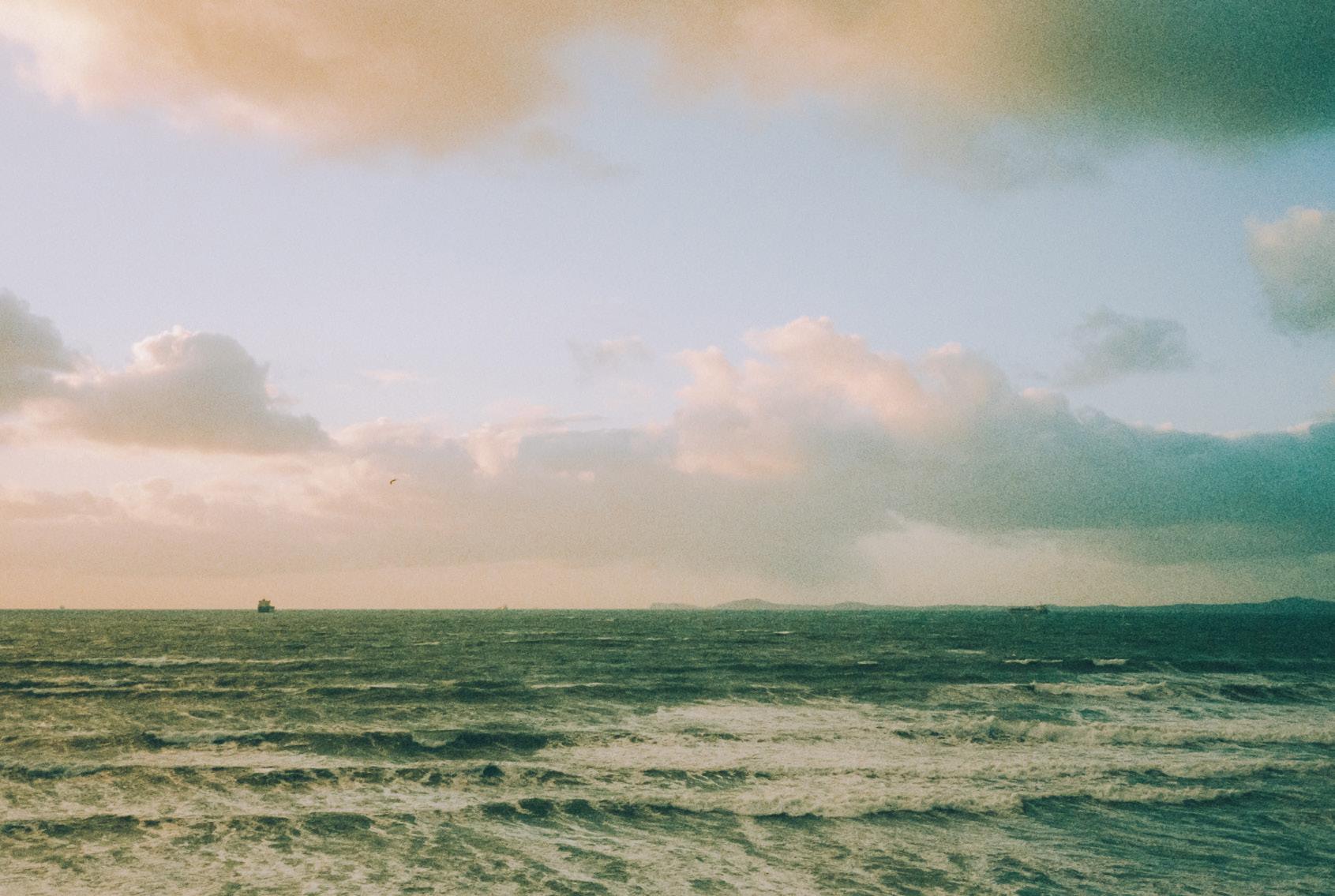



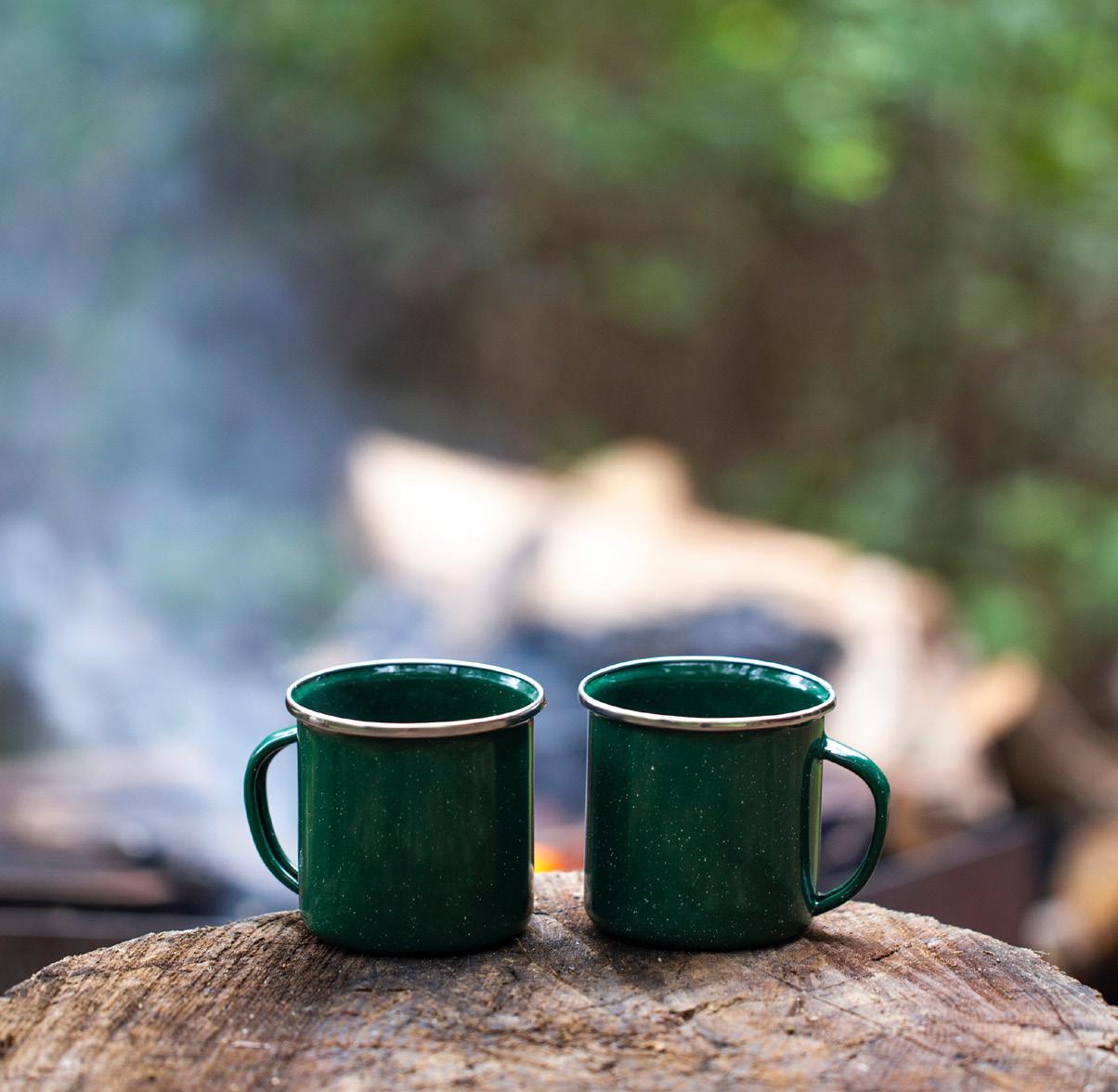
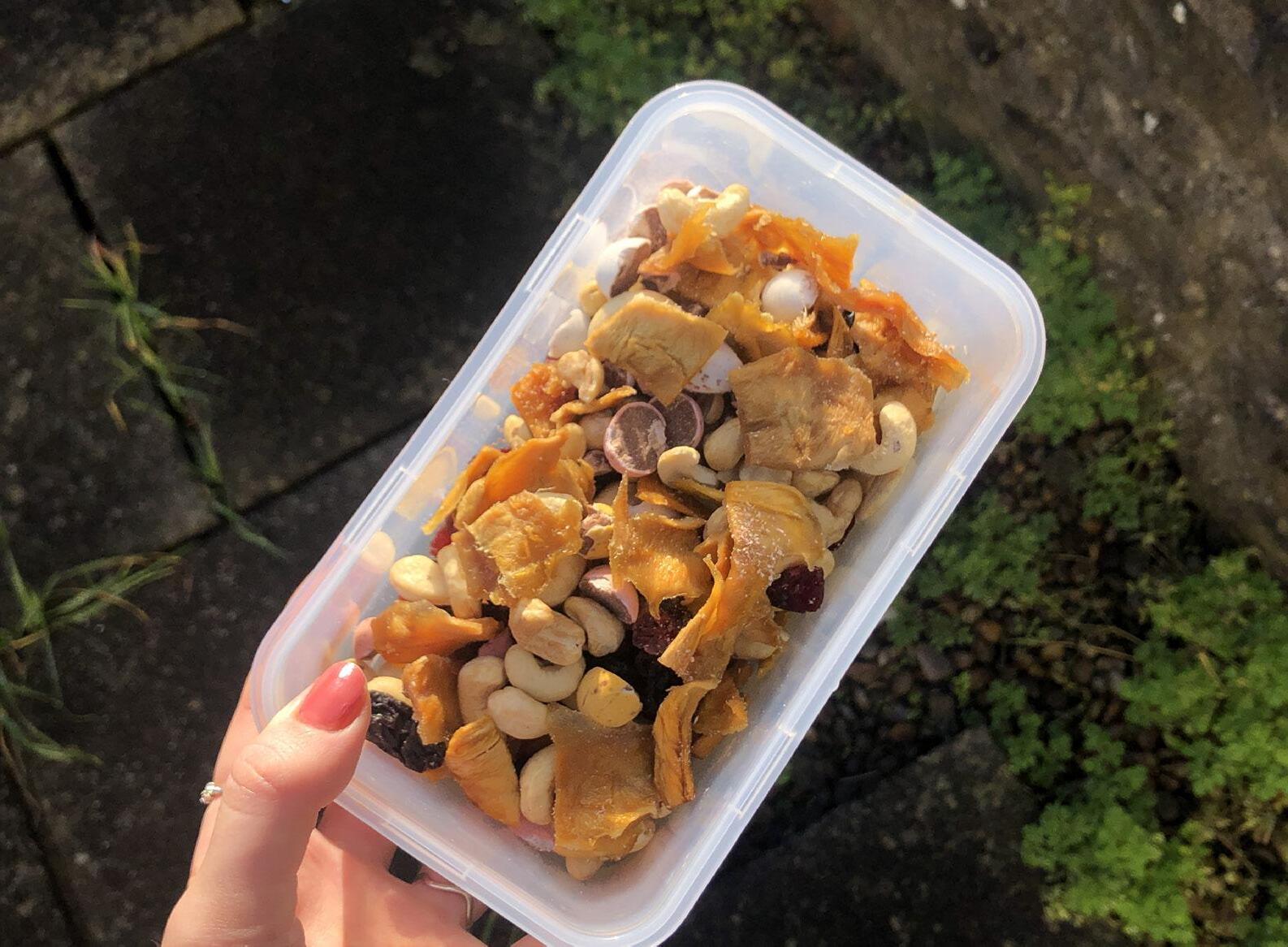





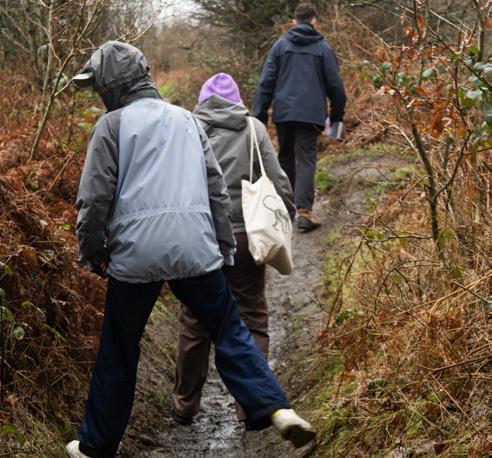

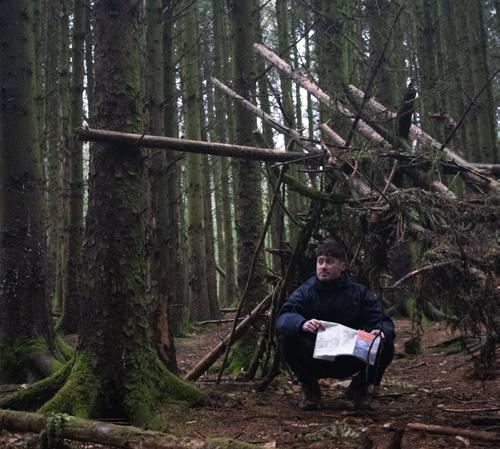



Peak District Day Trip from Liverpool
The group takes you on a short climb to the top of Mam Tor and a visit to the village of Castleton. There’s also the opportunity to visit Peveril Castle, local caves, Winnats Pass limestone gorge and the Cave Dale valley.

WHEN: 11 March 2023
WHERE: Starts from Costa Coffee, 44 Lord St, Liverpool L2 1TD
PRICE: £45
BOOK HERE: bit.ly/peaksdaytrip
Access to the Countryside for All Networking Conference
A two-day event for people who want to access the outdoors, either as part of an informal group or as a company, such as a registered charity. The event lets you connect with resources, information, networks, and opportunities to help you form a community. You can also volunteer with them.
WHEN: 22-23 March 2023
WHERE: Youth Hostels Association Okehampton, Klondyke Road, Okehampton, Devon EX20 1EW



PRICE: Free
BOOK HERE: bit.ly/accessthedales
Graham Harvey, Jake Fiennes and Sarah Langford: Saving the British Countryside and Our Health
Journalist Graham Harvey, conservationist Jake Fiennes, and farmer turned author Sarah Langford discuss their recent books on farming, the challenges facing its communities and reconnecting with land and nature.

WHEN: 25 March 2023
WHERE: Oxford Martin School: Lecture Theatre, Oxford OX1 3BD
PRICE: Individual ticket price: £7.00 - £12.50; Group ticket price: £12.50
Five words for your
1. Sight
British legend David Attenborough voices the three-episode series Life in Colour, which provides a wholesome and fascinating watch. The 2021 documentary, available to watch on Netflix, focuses on how animals use colour throughout their lives in a variety of beautiful and mysterious ways.

2. Sound
Guests on The Adventure Podcast are outdoors experts among the likes of landscape photographer Colin Prior and mountaineer Ella Wright. Host Matt Pycroft chats to professionals on all sorts of outdoor pursuits. The Adventure Podcast is streaming on all major platforms.


3. Taste
Nettles have a light and fresh flavour, and can be added to a variety of meals this season. Best picked in spring when tender, they can be found in most gardens, hedgerows, woodlands and other habitats - just don’t forget your gloves. Once washed and boiled, they can be added to anything from soup to pastries.

4. Smell

The White Company’s Spring Collection is a great scent to invest in. A curation of an earthy candle, diffuser and fragrance oil, the fresh floral scent has notes of honeysuckle, rose and cut grass. The candle and fragrance oil each retail for £10 on their website, while the diffuser is £30.
5. Touch
If you’re planning an uphill hike or a camping expedition this season, a sunscreen always comes in handy. Former beauty and health director of Marie Claire, Jennifer G. Sullivan, recommends applying sunscreen even on cloudy days to prevent burning. Enter Eucerin sun protection range, which offers multiple options for different skin types, all at under £20.

You never know when you will need to ask for assistance in another language, so it’s always handy to pick up some extra lingo. This issue looks at how to ask for help in British Sign Language, or BSL. Pictured right is the universal sign for help.

Overlanding: travelling a long distance across land.
Example: “We overlanded all the way across the Brecon Beacons.”
Vernal: relating to or happening in spring.
Example: “This cherry tree is in its vernal bloom.”
Bikepacking: a multi-day tour by bike, completed with the rider carrying their equipment on their bike.
Example: “I’m planning my first bikepacking trip for the summer.”
Coasteering: the activity of exploring a rocky coastline by jumping, climbing or swimming.

Example: “I had such a fun time going coasteering in Newquay.”
Nemophilist: a person who is fond of forests or forest scenery.
Example: “I have become a nemophilist since going to Sherwood Forest every weekend.”
We recreate Princess Diana’s and Frank Ocean’s iconic outdoor looks in a vintage store
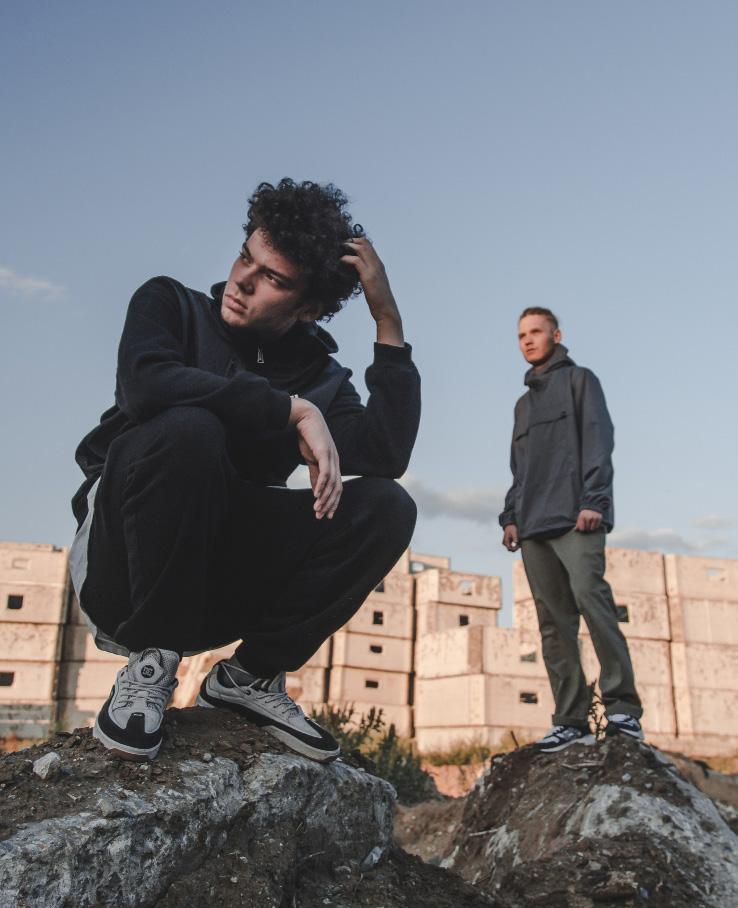
Words by: Ben Jones and Grace Nicholls

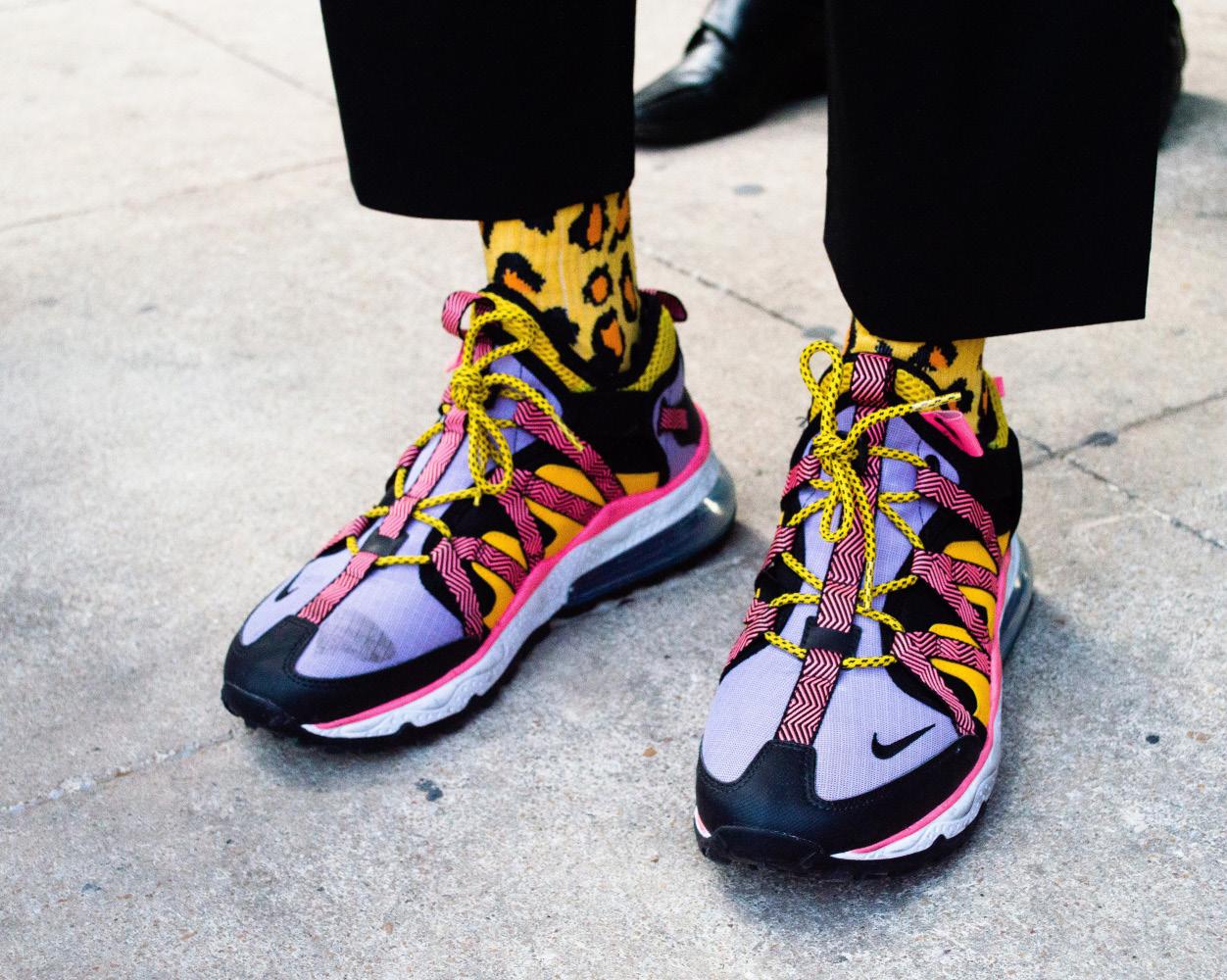
 Credits: : Top Left: Diana Caballero, Top Right: Mark Adriane, Bottom Left: Ilya Mirny, Bottom Right: Jessica Radanavong
Credits: : Top Left: Diana Caballero, Top Right: Mark Adriane, Bottom Left: Ilya Mirny, Bottom Right: Jessica Radanavong
What do Diana, Princess of Wales and Frank Ocean have in common? Gorpcore! The late Princess’s iconic ski look from 1995 and Ocean’s yellow puffer worn at Paris fashion week 2019 are the It-outdoor attire we need.
The trend has become a staple of not only celebrity high fashion but also everyday wear. Despite the hefty price tags on high-end brands, the accessibility of Gorpcore has been praised by the fashion industry.
But how true is this? Can effortless celebrity Gorpcore looks be mimicked at your local vintage shop?
GORP reporters Grace Nicholls and Ben Jones head to Flamingo’s Vintage in Cardiff to find out.

Diana’s outfits are remembered to this day as some of the most influential fashion statements in the royal wardrobe. Her famous look from a 1995 skiing holiday in Austria consists of a quarter-zip jumper layered over a turtleneck sweatshirt. These items were easy to find and sported unique designs in bold colours. Practical yet fashionable, her skiing outfits are a great representation of Gorpcore clothing. Who said you can’t look fashionable while getting outdoors?
A vintage store, which we were surprised to find stocked with many Gorpcore pieces, turned out to be the perfect place to look for a replica of this royal outfit. The prices weren’t always budget-friendly, but if you want ethical, well-loved pieces for your sustainable wardrobe, we couldn’t recommend vintage shopping enough. It’s always nice to know that the pieces you buy in a vintage store are more unique than anything you can find on the high street.
Layering in outdoor outfits not only looks good but can protect you from colder weather – an important consideration when you’re thinking about the best way to look good but stay practical. Adding a pair of round sunglasses for some UV protection also looks stylish.
While the vintage ski boots we found felt a bit less practical for outdoor wear (remember to buy carefully when opting for secondhand), they tied the outfit together and ultimately gave us a great replica. One thing’s for sure, if you’re looking for some Gorpcore inspiration, a vintage store is a good place to start.
Recreating Frank Ocean’s 2019 Paris fashion week look initially did not seem like too much of a challenge.

I would say my everyday outfits (and sometimes even my best looks) definitely fit the relaxed image that Gorpcore presents, so I gravitate towards this style naturally anyway.
With all this considered, I believed that finding a yellow puffer, washed-out jeans and a winter beanie in a local vintage shop would be a breeze.
In a way, I was right: the wide range of Gorpcore pieces in the shop was overwhelming. Rails were stocked to the brim with North Face and Columbia puffer jackets, Dickies work trousers, Carhartt jeans, and endless waves of fleeces. However, the real problem was the sizes.

 Keep practicality while embracing colour to elevate your look.
Image Credit: Diana Caballero via Unsplash
The final recreated look. Grace served 90s, while Ben, let’s be Frank, nailed the look.
Keep practicality while embracing colour to elevate your look.
Image Credit: Diana Caballero via Unsplash
The final recreated look. Grace served 90s, while Ben, let’s be Frank, nailed the look.
“Who said you can’t look fashionable while getting outdoors?
owned and flicked through a smorgasbord of different washes before stumbling across a perfectly-coloured pair of Carhartt jeans that looked well over ten
The only problem was that I’m a 36 waist, and the jeans were a 34. For the sake of saving myself another half an hour sifting through more jeans, I decided I could just suck in my gut for the photo opportunities. I
Finding a yellow jacket proved the easiest part of creating the look, mainly because the colour makes the jacket stand out like a local traffic warden. A twominute browse of the jacket rails resulted in finding the
The only issue with the jacket is that it lacked the ‘puffer’ quality of Frank Ocean’s snazzy Arc’teryx piece. To solve this, I complemented the North Face matched bodywarmer the advice from stylist I’d previously read article, “silhouettes are little looser and baggier, easier to layer pieces.”




To complete the look, I just needed a beanie. I knew I wouldn’t be able to completely match Frank Ocean’s Arc’teryx heavily patterned hat, so I The look was
 Gorpcore can be expensive. Shopping in your local vintage or charity shops, however, can have unique pieces.
Image Credit: Grace Nicholls
Gorpcore can be expensive. Shopping in your local vintage or charity shops, however, can have unique pieces.
Image Credit: Grace Nicholls
Welsh photographer and videographer Daniel ‘Alfie’ Alford has always had an interest in the natural world. While studying geology and earth sciences at the University of South Wales, he took trips to photograph exciting locations such as Iceland and iconic landmarks like Mount Etna. Now he has built a career spanning 11 years, in which he freelances for publications such as National Geographic and Lonely Planet, and has travelled everywhere from Beinn Alligin in Scotland to the mountains of Kyrgyzstan.
How did you initially get into freelance photography?

I would go hiking in Scotland or Norway, take pictures and put them on Instagram. It wasn’t until my first job for Ernest Journal in Greenland that I realised you could do it as a career. From there I started pitching to magazines and building contacts.

How hard has it been getting your work featured by big brands like National Geographic?
It’s mostly about learning about what an editor wants from you. If you’re pitching to a magazine, showing that you understand the readership is the key thing. If you’re pitching stuff that you know would never be in the magazine, you’re wasting your own time.
Is having an online following important to you?
It certainly helps. I’m not too bothered about it though – it’s incentivedriven and you end up judging yourself on likes. An important question
to ask is: who is my feed meant to look good for? Mine is meant to look good for editors, agents and art buyers.
How do you go about taking a landscape shot?
Wild camping is really the only way to do it. When I did the West Highland Way, I took all of my own food, camera gear and a tripod. I was just drinking water from streams. I also go to places where there’s going to be a good sunset. I’ll use Google Earth beforehand to simulate the sun coming up and down.
What’s the riskiest situation you’ve been in to get a photo?
I was on a mountain in Norway when the clouds all descended, and there was only 10 metres of visibility. I wandered off to find some water to cook with and by the time I found some, I turned around and I’d lost my tent – it took me almost an hour to find it. When I told my mum that story, she bought me some tent pegs that have LEDs in them!
Is getting outdoors beneficial for your mental health?

Yeah, it’s what pushed me into the career, in a way. All the trips I was doing were self-medicating. There are a lot of studies about natural rhythms (e.g. the rising and setting of the sun, tidal ebb and flow) and the positive influence they have on brain frequencies.
What’s the coolest place you’ve gone to on a job?
Probably Kyrgyzstan. We were looking for snow leopards around 4000 metres above sea level, camping in the snow for 10 days. There were wolf tracks coming through the camp and loads of bears around. We were horse riding through the mountains and crossing rivers. I didn’t know how to horse ride, so it was a bit of a baptism of fire!
Any advice for aspiring photographers?
You just have to keep practising. If you don’t take pictures of things you love, it’ll never come through. You have to really, really want it to the point where you’re not even thinking about it, you’re just doing it.
Words by: Almha Murphy
You give it a shot
Alfie’s Wild Camping Essentials:
1. One-man tent
2. Good sleeping bag
3. A raw mat (a camping mat designed to protect you from cold, wet and uneven ground)
4. Some freeze-dried food (food that requires water to rehydrate)
Camera of choice: Mirrorless Canon R5
Favourite photography spot in the UK: Assynt, Scotland
Wild camping safety tips:

1. Tell people where you’re going before setting off
2. Invest in good quality clothing and camping equipment
3. Use Ordnance Survey maps
First things first: you don’t need state-of-the-art equipment to start hiking. Don’t let the pole-wielding, high-vis-donning walking groups scare you off – there is more to hiking than looking the part.

To help with the essentials, we ask Rob from Cotswold Outdoor and Molly from Mountain Warehouse for their top tips and gear picks this spring. Shake off the gear fear and leave it at the door with our guide to your very first hike.
Footwear matters most
You will be spending most of your time crossing uneven terrain, so to avoid injury, make sure your ankles are supported. If you own boots you don’t mind getting muddy, then you’re good to go. Otherwise, any waterproof hiking boots will do the job. While they may be less breathable, waterproof boots are all-rounders for beginners on shorter hikes. “Basic quality walking boots will do you fine,” says Molly. She encourages people to try out hiking before investing in anything pricey, with good footwear being the most important bit of kit.
Tread is also something to consider
It’s the pattern on the sole of your footwear. The deeper the tread, the better grip you will have on uneven surfaces such as rocks and mud.
So long as it has enough space for a jacket and some snacks, any bag will do. If you’re in the market for something new, Rob from Cotswold Outdoor recommends a Daylite bag by Osprey. They are lightweight and waterproof with enough room to fit in snacks, a water bottle, and any outer layers you take off. A 13-litre bag is plenty of space for your outdoor adventures.
Make sure to bring enough water
Any bottle will do. Pack snacks that won’t crumble in their packets such as jerky or our GORP mix on page 19.
If you are supplementing your hikes with other activities, be sure to pack your birdwatching binoculars or sketchpad and pencils. For navigation, as we found out last issue, you can see most smaller trails on Snapchat’s Snap Map. Now you know the basics, why not give it a try?
Words by: Isaac Murphy

1.Be keen with your beans
“My top tip is simple – make sure to grind your beans before you go,” advises Caitlin from The Wildcat cafe in Fort William, in the Scottish Highlands. Leaving the grinder at home and packing your coffee in a resealable bag will save you time and space when on the trails.
Owen from Cardiff’s Hard Lines Coffee recommends an Aeropress Go: a simple and lightweight plunge brewer. Pour your grounds into the chamber, fill with water, stir, and leave to brew before plunging your fresh coffee into the cup. The Aeropress can be stored in its mug, making it your most space-efficient brewing option.
“A cafetiere is the easiest to use with any type of stove and would be quite cheap for those starting out,” says Caitlin. Also, the cafetiere is more readily available than the Aeropress Go’s patented design.
When on the go, a portable stove is a must. Rory from Cardiff cafe
Ffloc recommends either an APG or a Jetboil stove; both are small enough to carry on your travels.
As an avid camper himself, Rory suggests a steel cup to boil your water in, which can double up as your coffee mug. Be sure to bring a water bottle too.



Concrete roads do not let you see the path behind you. The satisfying squelch of mud, the chirping chatter of blue tits and robins and goldfinches, the flurry of feathers as you disturb a huddle of shiny-eyed magpies.
You look behind you, and see every right and wrong turn you made.
The stutter you made at the ageless oak tree, a ring of your footprints circling its trunk
as you were caught in the soft rhythm of the wind. The pinpricks in your clothes from where a blackberry bush caught your eye, thorns begged you to come closer. Indeed, the thought of returning to the world of concrete roads and heavy office walls is a weight dragging through the earth. But you can take this place with you, sitting like a calming crystal in your heart until your next visit.
by Robyn Quick Ilustration by Sian Hopkins
Ilustration by Sian Hopkins
• Great tit
• Robin
• Greylag goose
• Great crested grebe
• Grey heron
• Moorhen
• Canada goose
• Mallard
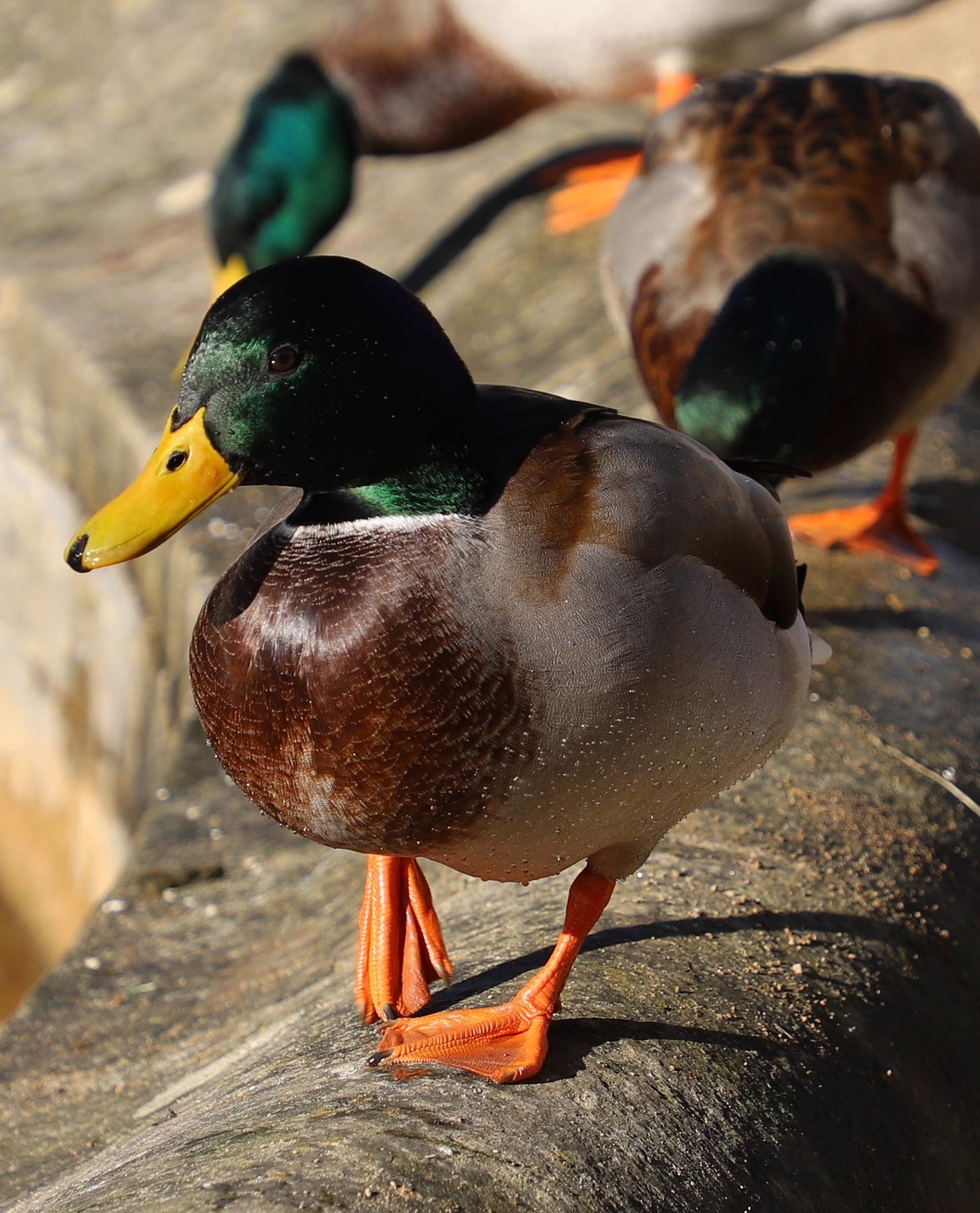
• Mute swan
• Coot
• Blackbird
Ididn’t think I would be so interested in looking for a blue tit, but as I sat in the park, I was searching for almost an hour. While birdwatching doesn’t exactly have the reputation for being the most exciting activities, new apps are making your retired uncle’s favourite pastime accessible, inclusive, and cool.
Having never tried birdwatching before and not being able to identify different species of bird, I saw this activity as quite the challenge. I began by doing some research and finding an accessible area in Cardiff that’s popular for birdwatching.
Described as an “urban treasure” by Birdingplaces, Roath Park Lake is an important habitat for overwintering and breeding birds. The most common birds include: mute swan, great crested grebe, black-headed gull, and coot.
I spoke to Jean Haslam, chair of Glamorgan bird club for some advice as a first timer. She said, “It’s possible to find birds anywhere outside, best tip –the main thing is to look.”
She said it is more fun if you birdwatch with someone else, so I dragged my housemate along. With a combined total of knowledge of three birds, we follow Haslam’s advice to build our species knowledge slowly.
I followed the path surrounding the lake, suggested by Birdingplaces, as well as venturing into the park as well. I used a birdwatching app, Birda, and I started my session by logging the different birds I came across. The app’s
built-in species guide – with photos and descriptions – was especially helpful. Before this, I could only confidently say I knew ducks, swans and gulls.
I visited the park, just a 10-minute walk from my house, on a gorgeous, bright Sunday afternoon. I chose this route because, along with being a lovely park, I felt I knew it quite well. It seemed a lot less daunting going somewhere I know well while doing something I didn’t.
Due to it being a Sunday, the lake was very busy with families, so I suspected the noise may have scared away some of the birds. The most frequent birds on the lake were coots, mute Swans, mallards, and geese.
Overall, I spotted 13 different species. Each time I saw a bird, I logged it straight into the Birda app, which Haslam encouraged. While she suggested a notepad and pen (it’s easy to forget what you have seen), I found using an app a lot better when out and about.
While it was tracking me, it had identified where I was when I saw a type of bird. This makes it easier for avid bird watchers to reflect on their findings. You can also add photos of the birds you saw.
I really enjoyed getting out of the house, especially because it was sunny and warm. I learned about several new species, and it really made a difference going with someone who helped me look for birds, take photos, and identify species.
It distracted me from the outside world and anxieties because I was constantly thinking about spotting each bird. Relaxing and insightful, birdwatching is an activity I would definitely try again.
Cold water swimming is all the rage at the moment, so one chilly morning I decided to see what all the fuss was about. During summer, swimming comes easy – what is better than a natural cool off? However, I’m not sure the same can be said for the colder seasons. Truth be told, embracing the cold British waters has never appealed to me, but the activity has evolved from a niche fad into a highly rated outdoor activity.
So, one chilly spring morning, I joined a dozen outdoor swimmers at sunrise and prescribed myself some cold water therapy.
I attended a sunrise session with the Dawnstalkers, an outdoor swimming community group which aims to encourage people to take to the sea on Penarth Seafront in South Wales. Penarth is easy to commute to from Cardiff, so at 7am, feeling rather tired, I caught the train to the coast.
Professional gear wasn’t an essential requirement, so feeling rather illequipped, I brought what I had – my towel, a bikini and an insulated jacket.
As I approached the group, the hue of the sunrise reflected vividly off the sea. It was beautiful.
I walked over to the huge crowd of brave swimmers, many of whom had already entered the sea. Everyone was open to chat, and with some encouragement from a stranger, I stripped to my bikini and started my descent to the sea.
I neared the waters edge, already shivering. The icy waters quickly numbed my feet and walking over the rocks felt like a task in itself. One of the group members said it was a case of ‘mind over matter’, but all I could fixate on was the sheer physical pain. With every step the extremity of what I was about to do felt more intense and very uncomfortable.
I immediately felt defeated, but a kind lady offered to walk in with me, so I took her arm and let the cold water slosh against my legs, which intensified the numbing sensation.
When the sea reached my hips, I stood still for a few moments, swayed with the bitter tides, and let myself be. Other swimmers urged me to go to my shoulders, so in a moment of madness, I let go and went under. While the cold feeling didn’t subside, the thrill felt far greater.
After a few minutes I knew I had reached my limit, so I ambled across the rocks and back to the dry land, eager to find my towel.
Wrapped in my towel and shivering to my core, I looked to the coast to reflect on what I had achieved. Some brave souls committed themselves to the icy submersion for quite some time, and others swam as if it was a blissful summer evening.
Nonetheless, I felt an immense sense of pride. I couldn’t have done it without the encouragement of the group members. Regardless of everyone’s individual ability, there was a strong sense of togetherness.
Cold water swimming is certainly not for the faint hearted, but the icy thrill makes it all worth it.

Swimwear
- Bikini, swimsuit, wetsuit, rashvest
Watershoes
- Not essential but highly recommended for safety reasons
A towel or robe
- To change or dry off
Something to stand on
- Bathmat, carpet or underlay
Cold
is all the rage at the moment, so one chilly morning I decided to see what all the fuss was about
‘It’s alright once you’re in’
“All I could fixate on was the sheer physical pain!
camping spot. The islands remain a popular destination for people who enjoy waking up to watch the sunrise. The beaches and sandy dunes are also particularly pleasant during the summer.
Under the Land Reform Act 2003, wild camping in Scotland is permitted almost anywhere with very few restrictions. For this reason, Scotland is one of the best places in Europe to wild camp according to Euronews Travel. A great reason to try wild camping is to immerse yourself in the rugged beauty of barren desolation. This is why a trip to the Ardnish Peninsula is a must according to Jim Butler of RedBull.
He says: “Dramatic landscapes combine rough mountains and desolate glens with shimmering beaches and beautiful bays. This is wild camping at its most adventurous.”
GORP recommends:
The public’s right to roam – freedom to explore natural landscapes on foot – has become a hot topic after a controversial High Court decision ruled that landowner’s permission is now needed to wild camp on the Dartmoor Commons. This is an upland area in the south of Devon and the last remaining area in the UK where it was legal to wild camp. Only 8% of England is free to roam under the Countryside and Rights of Way Act 2000, and only one-fifth of Wales is mapped with land accessible to the public on foot, according to Natural Resources Wales.
A spokesman for The Stars are for Everyone, a newly formed protest group, says a lot of work still has to be done to support the cause. The group recently appealed for public donations to keep pressure on landowners.
Environmental campaigner and poet Guy Shrubsole says he remains hopeful for the future of Right to Roam laws in the UK after opposition parties publicly expressed concern: both the Liberal Democrats and the Labour party have pledged to amend the current Right to Roam rules if elected.
With many national parks including Dartmoor having to settle for a permissive system of wild camping where the landowner’s permission is needed before settling, GORP roams around Europe to find some of the best places to wild camp.
There’s no surprise that Switzerland has made it here. Best known for its magnificent mountains and landscapes, it’s the perfect attraction for skiers and winter retreaters. Contrary to popular belief, Switzerland remains a very popular destination for summer holiday-makers – especially those who enjoy wild camping.
Be that as it may, before heading off into the mountains, there are some restrictions to consider. Although the notion of camping freely is widely accepted, it does not apply to every region. Despite the general permission, wild camping is prohibited in national parks, hunting grounds, various natural reserves, and wild rest zones (during protection periods). It’s also important to respect mountain huts along your trail.

GORP recommends: Nufenenpass. Located in the Swiss Alps, it is one the tallest mountain passes in the country. A charter bus takes you straight to the summit, where you are free to camp surrounded by panoramic views of the Swiss mountains.
Well-maintained hiking trails, beautiful coastal lines and unbelievable mountain views – it’s simply impossible not to include Norway on our list. Perhaps the country’s greatest asset is its accessibility to all forms of nature from major cities – you could book a holiday to the town of Bergen and still enjoy a few days away in the mountains camping.
There are some limitations such as the extra cost of pitching more than one tent and staying over the one-night cut-off, but this only applies to a minority of locations.
Keep in mind, the golden rule is that you respect your surroundings and keep your area clean and tidy. As is the trend in most Scandinavian countries, if you respect these unwritten rules, you are free to enjoy nature as you wish.

GORP recommends:
Lofoten Islands. Located inside the Arctic Circle, the Lofoten islands are the perfect summer
Peanmeanach Beach, Ardnish. Beautiful and outstanding landscapes are best found on the west coast of the Highlands with fabulous walking trails and views to complement the furrowed aesthetic.
Although pitching in a single area is limited to only two days, Sweden offers some of the best areas in the world for wild camping. Allemansrätten – the people’s right to roam – is so important to Sweden that it’s written in their constitution, one of only four of the grand laws.Understandably, wild camping in a foreign country may be overwhelming. But once you’ve spent the night under the Northern Lights, a warm summer’s day walking along the Baltic coast, or a weekend hiking up Sörmland mountain, this Scandinavian oasis will leave you with a lifelong impression of solitude and euphoria.
GORP recommends: Skuleskogen National Park. Located on the Baltic Sea coast in northern Sweden, the park has one of the few remaining old forests as well as high mountains, rocky terrains, beautiful woodlands and freshwater rivers. Several buses and trains are available to take you to one of the two entrance points.
In Finnish culture, wild camping is known as Jokamiehenoikeudet, which means “everyman’s right.” Known as the land of a thousand lakes –it’s actually nearer two thousand – Finland is the perfect destination for a back-to-nature camping trip, in the opinion of Scandinavian travel guide Routes North. Like the UK, Finland offers highend camping – or glamping as it’s best known. The Finns embrace their natural landscapes with ease and tranquility; since there are more saunas than people, the majority of sites will have access to steaming hot saunas.

Alternatively, if you’d rather rustle up your tent and take to the wilderness, you are completely free to do so. It’s also legal to fish and pick berries, wildflowers and wild mushrooms for your consumption.
GORP recommends:
Martinselkosen Eräkeskus. Have you ever considered bear watching? Finland’s wilderness centre in Kainuu is one of the best places to try it. This fantastic woodland site stretches for miles with options to rent cottages or camp freely. Free wifi is available across the site.
Exploring natural landscapes without barriers may seem like a fantasy, but where can you actually wild camp?Words by: Matthäus Bridge
If you were to Google the term ‘adventurer’, the search results would likely be dominated by men celebrating their epic outdoor explorations, with very little space given to women doing the same.
This lack of female representation was a concern for outdoor lovers Anna McNuff and Emma Frampton. To challenge this inequality, they founded Adventure Queens in 2017, a not-for-profit women’s adventure community run by volunteers.
What started as a Facebook group six years ago is now a nationwide organisation with 28 regional groups that hold regular events for its members like walks, navigation skills workshops, paddle boarding and kayaking. Nadia Weigh, one of the group’s community leaders, says women have certain unique barriers that stop them from getting outdoors, which is why groups like these are needed.

In the online groups, members regularly have questions about outdoor activities that speak to these particular challenges. How do you wear a buoyancy aid for paddle boarding if you have a larger bust?
What is the best female-specific bike saddle? (Fun fact – women have wider sit bones than men, and so prefer to sit further back on the saddle.) Adventure Queens encourages discussion about issues like these, creating an environment where members can share tips and advice.
However, there is perhaps a more pressing need for groups such as Adventure Queens. In a 2021 survey by female-centric adventure community Love Her Wild, 62% of respondents reported being treated differently in the outdoors because of their gender, with experiences including feeling unwelcome, patronised, and ignored in group activities.
The idea of a women-only group is sometimes questioned (“often by men,” remarks Weigh), but the purpose is to enable women to have adventures together safely and securely and experience the outdoors without fear.
Virtual adventures
Watching a movie or reading a book might not be the most likely of activities for an outdoors group, but a new addition to Adventure Queens is just that: an online film and book club that takes place monthly. This was only meant to be a temporary alternative to in-person meetups during Covid restrictions; a way to keep the community connected while they could only dream of future adventures. However, the online discussions of adventurethemed media attracted new members who had never come to an event before.
In the same Love Her Wild survey, 55% of women said that a lack of confidence was stopping them from getting outdoors. To combat this issue, the online meetups and virtual skill-sharing sessions allow members to meet one another in a relaxed and low-pressure environment. Weigh believes this new type of event has made the group even more accessible and inclusive.
“When you’re trying to get people outdoors, sometimes it’s okay to start indoors,” she says. “It’s planting that seed of adventure in people’s minds and helping them build their confidence before they commit to an actual outdoor event.”
The future is female
But, what more can be done? The group is introducing more outreach work to their programme. While their members have benefitted from the community, Weigh is aware that many more women don’t yet feel confident enough to join a group like Adventure Queens.
Upcoming projects for this year include working with refugee women as well as women who are living with long-term health conditions. “We’re really passionate about working with women at all stages of their adventure journey,” says Weigh.
Adventure Queens’ website states that the community helps to “delicately smash down barriers” that prevent women from accessing outdoor adventures, a phrase that Weigh says sums up what they are trying to achieve. she adds, “I think women are supposed to be feminine and delicate, but actually, we are smashing down these barriers and we’re not going to be polite about it.
“We like the contrast between what we’re supposed to be, and what we feel like we are.” Groups like Adventure Queens are redefining what an adventurer looks like – regardless of what the Google results say.
For more info about the group, check out adventurequeens.co.uk.
Breaking new ground
Adventure Queens aren’t alone –here are some other female-centric adventure groups around the UK making the outdoor scene more inclusive:

Glamoraks (www.glamoraks.com)
Described as an airbnb for hiking, Glamoraks is a collaborative online community and mobile app that allows women to find fellow female walkers near them and to share their hiking experiences with other outdoor lovers.
Black Girls Hike (@bgh_uk)
A safe space for black women to explore and enjoy the outdoors, Black Girls Hike focuses on challenging the status quo and hosting hikes that are both easy and fun for their participants.
The Wanderlust Women (@the.wanderlust.women)
The aim of this group is to “encourage Muslim women and women from ethnic minorities to get outdoors and break barriers and misconceptions” through hikes, navigation courses, and expeditions in both the UK and Europe.
Rivers provide two-thirds of our water supplies - data from Rivers Trust

42% of fish are of good quality in UK rivers - data from GOV.UK, June 2021
Zero rivers in England, Wales, and Northern Ireland are considered to be in excellent health - data from Environmental Audit Committee
Freshwater ecosystems provide habitat for more than 100,000 known wildlife species - data from Rivers Trust
Springtime – the days are starting to get longer, the weather is becoming sunnier, and it’s the perfect time for a trip down to the river. But before you take a dip, there’s something you should know about the UK’s waters.
Only 14% of the rivers in the UK are in good ecological condition, according to the Environmental Audit Committee. The committee found that a rise in animal waste and sewage in our water supply, as well as a lack of monitoring, has created a dangerous mixture of chemicals in English rivers.
News reported that prime minister Rishi Sunak’s plans to remove over 4,000 pieces of EU legislation from the British statute by the end of the year is hindering the improvement of water quality in rivers.
If Sunak has his way, the Bathing Water Regulations, among other laws, will be scrapped. The regulation requires councils to openly provide information on the cleanliness of bathing sites. If the law is no longer in place, people who need these water bodies, including swimmers, will have less indication of whether the rivers are clean.
MP for Ludlow and Environmental Audit Committee chairman Philip Dunne informed the UK Government in January: “To deliver real change and improve the state of our rivers, a wide range of stakeholders must come together, including the government, regulators, and water companies.”
Countless organisations and individuals say the government’s response to this public safety issue is not good enough. These activists are challenging the government’s lukewarm response to the problem and taking it into their own hands.
Here are some of our favourite waterway warriors who are putting the health of the UK rivers first and leading the way to healthier waters.

As the government discusses scrapping regulations meet the people not letting our safety be sold

Who are they?
Not-for-profit campaign organisation Good Law Project (GLP) brings about changes in legislation throughout the world to protect our environment and give more representation to marginalised groups in this area.

So, what have they done for us lately?
They are campaigning against the threat caused to the River Wye from a new farming development on the banks of the River Dore: a smaller stream that flows into the Wye. The expansion plans of Bage Court Farm in the village of Dorstone includes the construction of a giant new livestock shed. The increase in manure runoff generated by this development will see more ecological damage inflicted on the stream and, by extension, the River Wye.

To check the untreated sewage being dumped into the rivers, GLP has also joined with the Marine Conservation Society and activist Hugo Tagholm to demand urgent action. In August, however, the Government published the Storm Overflows Discharge Reduction Plan, giving water companies until 2035 to reduce the amount of sewage discharge in the rivers.
How can I help?
You can donate to GLP’s fight for rivers, waterways and beaches through their website at goodlawproject.org
Who are they?
WildFish is an independent charity in the UK campaigning for the protection of wild fish and their environment.
So, what have they done for us lately?
Recently, the charity has challenged the government’s sewage overflow plans. They also criticised Southern Water’s resource management plan as it is deemed to “Lack transparency and clarity.”
The charity also makes suggestions to the government about treating chemical discharge and sewage into rivers. Their other projects focus on agricultural pollution, a riverfly (freshwater insect) census, and the unethical side of salmon farming.
How can I help?
You can show your support by donating to the charity’s extensive, UK-wide research at wildfish.org.

Who are they?
The Rivers Trust are conservation experts championing the power of volunteers in making real change. To balance the growth of urban environments with the amount of space needed for healthy rivers, they believe we must follow the ethos of “Wild, healthy, natural rivers, valued by all.”

So, what have they done for us lately?
65 members of The Rivers Trust across the UK and Ireland use a collection of local scientific knowledge to better understand how to protect water quality.
Their website provides extensive information on why our rivers need help and encourages more people to get involved and volunteer. This ranges from updates about upcoming river cleanups to allowing users to see if nearby rivers are suitable for swimming.

How can I help?

They have a selection of initiatives to get people talking about the state of rivers in the UK and Ireland. The Rivers Trust worked with over 14,000 young people in 2020 to engage with the next generation of river enthusiasts.
Check out their data sources and events at theriverstrust.org.
“Only 14% of the rivers in the UK are in good ecological conditionWildfish’s campaign to get farmed salmon off of the menu The Rivers Trust celebrating a clean water win
This International Women’s Day (8 March), the world will be celebrating the adventurous spirit of females past and present. Yet many women, along with other people who menstruate, still find ventures into the natural world daunting during their period.
“I run a lot of expeditions, and I get a lot of questions from young ladies about it,” says expedition leader, Dawn Adam. She owns Wild Women Camping, a business that offers women in the UK courses in navigation and camping advice.

Adam has noticed women under 30 are especially nervous about camping on their period due to unpredictable menstrual cycles. “They are not sure when their period will start or finish,” she explains. “As women get older, they know when their period will be, so they can plan for it better.”

The Devon-based instructor says that while campsites have become a lot better at accommodating for menstrual needs, more should provide bidets and sanitary product vending machines for people who get their period unexpectedly. “So, if they do get caught short, they can get some sanitary towels from the machine.”
Another major concern for women, Adam mentions, is cleanliness. Women feel that, away from home comforts, changing their period pad or tampon may be a messy business. “What puts women off is being unclean,” says Adam.
Outdoor instructor Harriet MacMillan also agrees that a lot of young women avoid camping on their period due to hygiene reasons – especially when using pads. “If you’ve just started your period, some religions teach that you can only use sanitary towels,” says the owner of Navigation with Harriet, a navigation course provider for those who identify
Words by Frances Danielsas women. “It makes it difficult to find a private spot to change and to keep your hands clean.”


So, what can women do to overcome these problems? First of all, make preparations –especially if you are prone to unexpected periods when travelling. Both Adam and MacMillan recommend bringing handwash and hand sanitiser in your backpack in order to keep your hands clean after changing your pad or tampon.
Fun fact: Getting outdoors on your period can help soothe cramps
MacMillan says you can also limit the number of times you need to change your product by opting for a menstrual cup. “I would say cups are easier to use because you need to clean them less often, as you only need to change them every 12 hours,” says the Cumbria native. “Plus, they are made of silicone, which is more environmentally friendly than plastic.”
A major problem with pads and tampons is their environmental impact, and MacMillan also points out that many products contain chlorine, which she calls a “hormone disruptor”. She advises: “If you can get some chlorine-free or organic ones, that would be much better.”
But if menstrual cups aren’t an option, are pads less hygienic and more high maintenance? “They are actually easiest to dispose of,” says Adam, who says that changing your pad while wild camping should not be a problem. “It’s remote, so no one can see you and you’re not relying on camping facilities –you can go behind a rock or a bush and use a friend as a lookout.”


It’s also important not to leave any waste behind and spoil the natural beauty of your surroundings, which can be accomplished by creating a waste system that works for you. “What’s really important is that we leave no trace of us being there,” says MacMillan.
Hand sanitiser and wipes: For when you’ve changed your sanitary product and there are no toilets nearby. Make sure to use biodegradable ones.
Fun fact: Getting outdoors on your period can help soothe cramps
“I put my used products in a nappy or dog waste bag, and I then put them in an opaque Tupperware tub which I put in my bag until I can find a bin.”
But why should women camp when they’re on their period anyway? Why spend time roaming the British wilderness when you could be at home curled up on the sofa with a hot water bottle and a bathroom nearby? Short answer: it’s empowering. “Being in nature is good for you,” says Adam. “It distracts you from period pain and helps you grow in confidence.”
Find out more about Wild Women Camping on their website at wildwomencamping.co.uk
Keep up to date with Harriet’s adventures @navigationwithharriet on Instagram.
Reusable hand warmers: Just place these on your belly to soothe cramps – you can put them under your sleeping bag at night or tuck them under your clothes while on the go. If they get too warm, MacMillan suggests putting them in a sock.
Protein bars: Stay nourished with complex carbohydrates and snacks that won’t get smashed easily or go off quickly.
Reusable water bottles: It’s important to stay hydrated – you can bring your own bottle to avoid unnecessary plastic waste.
Nappy bags or dog waste bags: Put used pads and tampons in dark-coloured, biodegradable bags and then place them in a sealable tub. Using darkcoloured, sturdy bags will reduce the risk of leaks.
With this mix, you can fulfil your sweet craving while feeling energised for your activities. In a celebration of Spring, we want to treat you to some chocolate mini eggs alongside a protein and fibre packed mix

Ingredients:






20g raisins
50g mini eggs
50g dried mango
50g cashews

20g almonds
Crush the mini eggs and mix in with the other ingredients – and you’re ready to go!
When you finish reading this issue of GORP, scrunch me up and use me to dry out your shoes or boots after a long muddy adventure
100% RECYCLED PAPER
